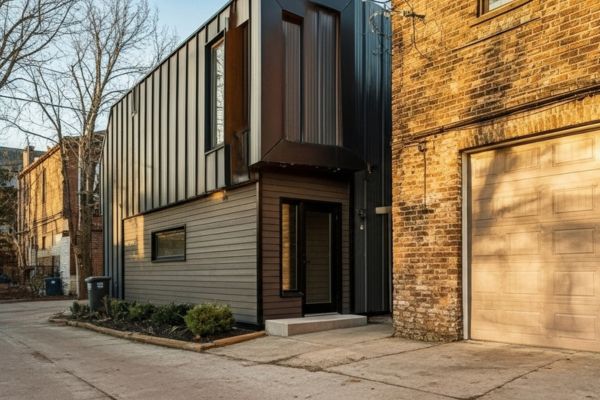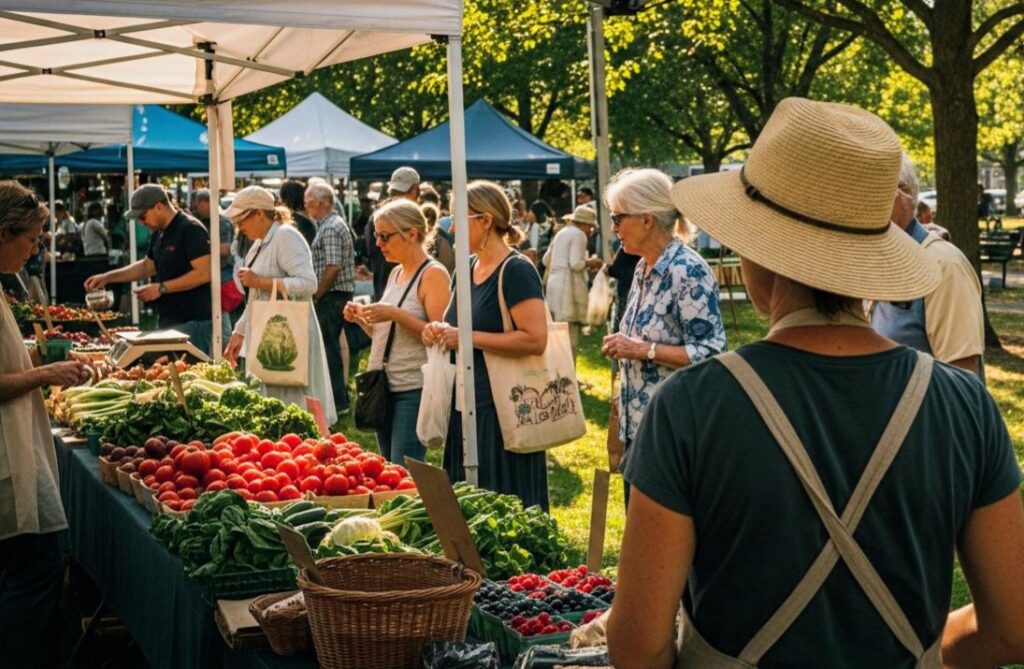How to Extract Equity from Your Toronto Home
10/20/25

Thinking about unlocking the value of your home?
If you’re living in west-end Toronto neighbourhoods like High Park, Bloor West Village, Swansea, or The Junction, chances are your home has appreciated significantly. With detached properties selling for $1.6M to $2M or more, there’s real potential to tap into that equity, whether for renovations, investing, helping your kids buy their first home, or simply boosting your retirement savings.
We’ve broken down the most practical ways to access your home equity, from traditional borrowing options to more innovative and creative strategies.
Whether you’re ready to make a move or just exploring your options, there’s something here to suit every stage of homeownership.
Traditional Borrowing Methods

Home Equity Line of Credit (HELOC)
A HELOC gives you access to up to 65% of your home’s value as a revolving credit line. You only pay interest on what you use, making it a flexible choice for renovations, education costs, or unexpected expenses.
To qualify, you need at least 20% equity if combined with a mortgage, or 35% equity for a standalone HELOC. For homes in Bloor West Village priced between $1.45M and $1.9M, that can mean hundreds of thousands in accessible funds without selling your property.
Cash-Out Refinance
This involves replacing your current mortgage with a new one for a higher amount, then pocketing the difference. You can borrow up to 80% of your home’s value, minus what you still owe.
Say your home in High Park-Swansea is worth $1.8M and your remaining mortgage is $800K—you could refinance up to $1.44M, leaving you with up to $640K in cash before fees and penalties. Fixed rates in Toronto this fall are sitting around 4.09% to 4.79% for 5-year terms.
Second Mortgage
A second mortgage lets you borrow against your equity while keeping your first mortgage intact. It’s a helpful option if you want to avoid breaking your existing mortgage—and the penalties that come with it. Though interest rates are typically higher, you can still access up to 80% of your home’s value.
Reverse Mortgage
Homeowners aged 55+ can tap into up to 55% of their home’s value without selling or making monthly payments. Some Toronto-based providers even offer up to 59% depending on your property and age.
This strategy works well for long-time west-end residents who want to stay put but need funds for retirement or care expenses. The loan is repaid when the home is sold or you move out permanently.
See our featured article about reverse mortgages for more details.
Innovative Financing Options
Home Equity Sharing Agreement (HESA)
This relatively new option gives you upfront cash, usually 5% to 17.5% of your home’s value, in exchange for a share of your home’s future appreciation or depreciation. There are no monthly payments or interest charges, which makes this appealing for those looking for financial breathing room.
In Toronto, companies like The Home Equity Partners and Clay Financial introduced these options in 2024-2025. You’ll need at least 30% equity in your home and a credit score of 500+ to qualify. When you eventually sell, or after 10 years, you settle based on how your home’s value has changed.
Home Equity Investment Partners
Similar to a HESA, this model provides capital upfront in exchange for a percentage of your home’s future value. It’s a shared-risk approach that’s becoming popular in high-value markets like the Junction and Swansea, where prices have generally seen strong appreciation over time.
Downsizing and Property Transition Strategies
Sell Your Home and Downsize to a Condo
Selling your house and moving into a condo can unlock a significant amount of equity. With detached homes in Bloor West Village fetching $1.9M+ and condos averaging $697K to $787K, the difference can be used to fund your retirement, travel, or even help your kids get into the market.
Condos offer benefits like lower property taxes, reduced maintenance, and access to amenities. Just keep in mind that condo fees can range from $357 to over $1,000 per month, depending on the building. You might also need new furniture to suit the smaller space.
Sell and Rent Back
This strategy allows you to sell your home, unlock your equity, and remain as a tenant. It works best in a buyer’s market, like Fall 2025, where prices have dropped 4–5% and sales are down 23.3%.
You’ll gain flexibility and liquidity, but lose out on future appreciation. Some homeowners in High Park and Runnymede are choosing this option to simplify their lifestyle without leaving their community.
Move to a More Affordable City
Relocating to a less expensive market is an effective way to stretch your equity further. In 2024, nearly 14,230 Ontarians moved to Alberta alone. Popular picks for Torontonians include Edmonton, Thunder Bay, and St. John’s.
Living in Sault Ste. Marie, for example, requires just $72,744 in annual income—far less than the $106,536 needed in Richmond Hill. If you’re open to a lifestyle shift, this could mean over $30,000 in annual savings.
Multi-Generational and Co-Housing Solutions

Multi-Generational Living
More families in Toronto are choosing to live under one roof. In fact, multi-generational homes are the fastest-growing household type in Canada. In the Toronto area, the number of people jumped 15% between 2011 and 2021.
By pooling resources, families can afford larger homes in neighbourhoods like Baby Point or High Park, where homes often range from $1.6M to $3M+. This setup can support both young adults staying home longer and older parents aging in place, while sharing expenses like utilities, mortgage payments, and even groceries.
Co-Purchasing with Another Family
Two families buying one home together is a rising trend, especially in competitive markets. With shared costs and responsibilities, this strategy helps buyers get into areas like Bloor West Village, where incomes typically range from $110K to $195K.
It’s essential to have a formal co-ownership agreement that outlines contributions, decision-making responsibilities, and what happens if one family wants to sell. Done right, it’s a creative way to make west-end living more accessible.
Housing Co-Operative Equity Share
Co-ops offer another alternative. Instead of owning a condo or house, you purchase shares in a co-op corporation that owns the property. Co-ops in Toronto have historically sold below market condo prices, with averages around $724K, and often come with lower monthly fees.
You won’t build equity the same way as traditional homeownership, and rental or resale restrictions can apply. But if your goal is affordable, stable housing with a sense of community, this could be worth considering.
Looking for more insights and helpful tips? Subscribe to get these delivered straight to your Inbox!
Accessory Dwelling Strategies

Laneway House
If your home backs onto a public lane, a laneway suite could be a smart way to turn unused space into rental income or multi-generational living. Since Toronto’s 2019 zoning change, many west-end homes now qualify for these suites.
To be eligible, your lot needs at least 3.5m of frontage onto a public laneway and must be within 45m of a street for fire access. These homes can rise 4–6 metres depending on lot depth, and the footprint is based on your lot size. Homes in the Junction Triangle and Runnymede often fit the criteria well.
Garden Suite
If you don’t have laneway access, a garden suite might be an option. Permitted since 2022, these detached units can be built in your backyard as long as they meet zoning requirements.
The maximum footprint is 60 square metres or 20% of your lot (whichever is smaller), and they can be up to 6 metres tall if set back far enough. These suites are ideal for aging parents, adult children, or generating rental income without leaving your home.
Basement Apartment or Secondary Suite
Converting your basement into a legal apartment is a tried-and-true way to make your home work harder. It provides a steady income stream and can offset monthly expenses. West-end dwellings with separate entrances and larger basements are especially suited for this.
Alternative Ownership Models
Rent-to-Own
Rent-to-own programs help future buyers gradually work toward homeownership. You sign a rental agreement with the option to purchase after a set period, usually 1 to 5 years. During that time, a portion of your rent goes toward your future down payment.
These agreements often include an upfront deposit of 2–5% and monthly rent credits of $500 to $740. After the term ends, you apply for a traditional mortgage using the savings you’ve built up.
The federal government committed $1 billion to support rent-to-own programs in 2022, showing a growing interest in this path to ownership.
Shared Equity Homeownership
In this model, you partner with an investor, often a government or non-profit, to purchase a home together. They provide part of the purchase price, reducing your mortgage needs. In exchange, they share in any future gains (or losses) when the home is sold.
This model lowers the barrier to entry for buyers who can manage monthly costs but struggle with the upfront down payment. It’s not the same as co-ops or co-ownership. It’s more like a partnership to make owning a home possible sooner.
Income Generation Without Selling
Long-Term Rental (Portion of Home)
Renting out part of your home, like a basement unit, spare bedroom, or separate floor, can provide a steady monthly income. In neighbourhoods like Swansea or the Junction, a single room can rent for well over $1,000 depending on the setup.
This is a reliable way to reduce mortgage payments while staying in your home. Just make sure the unit complies with Toronto’s zoning and safety standards.
Short-Term Rental (Airbnb)

Toronto’s short-term rental rules have tightened. You can only list your primary residence, and there’s a limit of 180 rental nights per year. Multiple listings or investment properties are not allowed.
That said, if you’re travelling or have a self-contained unit in your primary home, platforms like Airbnb can still bring in some extra cash. Just ensure your listing is registered with the city and follows all local regulations.
Leveraging The Value Of Your Home
Whether you’re planning for retirement, supporting family, or looking to grow your wealth, there are many ways to make your home work harder for you in West End Toronto. Every situation is different, so it helps to explore your options carefully.
And if you’re thinking about making a move or want local insights tailored to your goals, The Smith Proulx Team is always happy to help.
Give us a call or send us an email for a no-obligation discussion about what’s right for you.
Sign Up For Our Newsletter
Looking for more great real estate content? Get it delivered to your inbox with our newsletter!




